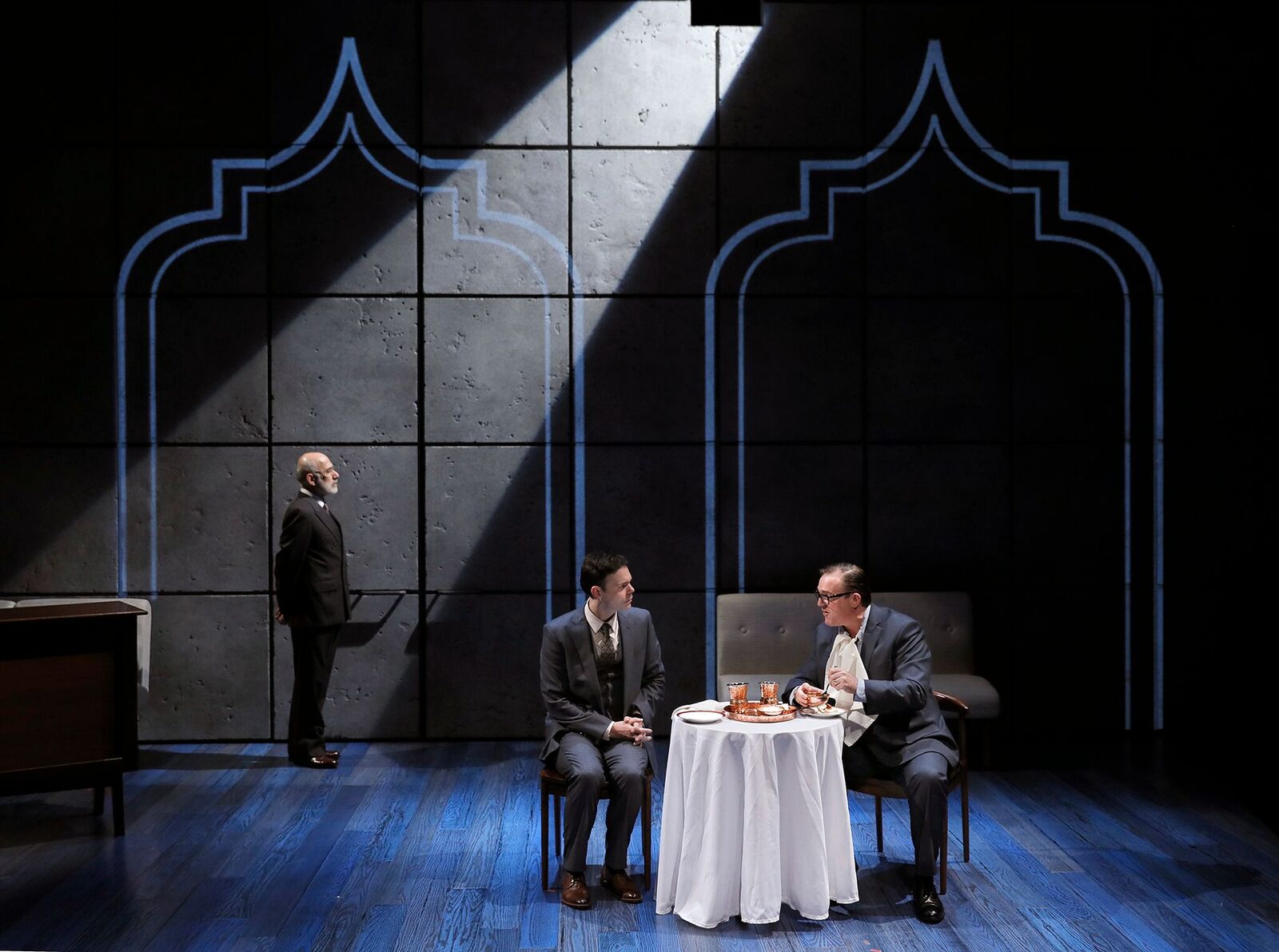Author: Cameron Fairchild
The Oslo Peace Accords, the result of a series of covert Norwegian summits between leaders on both sides of the Israeli-Palestinian conflict, were a failure. Two decades later, the Accords are already a footnote, a barely remembered stopgap in between periods of abject violence committed by the colonial Israeli faction against the Palestinian colonized. What can be gained by dramatically exploring Norway’s failed attempt at peace brokering? This is one of the central questions playwright J.T. Rogers’ epic, Tony-winning Oslo must answer, and it responds with an at-times optimistic, at-times all-too-realistic, depiction of just how difficult it can be for people to understand each other.

At three hours long, Oslo describes the almost accidental nature of the initial meetings between Israel and Palestine in its first act before ratcheting up the tension between the two in its second and third sequences, never losing in that time its focus on a key group of diplomats and leaders as they try to heal a decades-old wound. By honing in on character, Oslo’s script expresses the power dynamics between its subjects through interpersonal conflict and resolution. Oslo, despite its political subject matter, is primarily interested in the ways people can both empathize with and completely misunderstand each other. This focus on character would potentially mark Oslo as an apolitical character piece, perhaps ignorantly creating a false equivalence between the two factions, but the script smartly maneuvers away from fully allowing the audience to sympathize with Israel by frequently allowing scenes to build and explain the conflict—and its imbalances—both outside and inside the room where the diplomats meet. The script gracefully builds upon itself, deepening its relationships with each act, and weaponizing its length to describe the grueling, grinding debates that were integral to the Accords’ existence. It’s masterful.

Oslo has been brought to Seattle’s ACT Theatre by director John Langs, and currently occupies the ACT’s Falls Theater, easily its largest venue. The production, as a result, is bombastic to say the least, and there is a certain blockbuster quality to the design of the space. While the dull meeting rooms of the summits are perfectly, humbly realized, the music cues and use of projected title cards, dates, and historical footage are no doubt at least partially a measure taken to ensure the audience remains interested throughout the three-hour run time. The cast is uniformly excellent, anchored by Christine Marie Brown as Mona Juul, the Norwegian narrator of the piece who would perhaps feel more stock if not for Brown’s portrayal. As Oslo intensifies, so do the performances of Brandon O’Neill and Victor Pappas as Uri Savir and Ahmed Qurie, respectively. Playing men drastically opposed to each other, O’Neill and Pappas allow for an uneasy alliance to emerge gracefully between each other, creating stirring dramatic uncertainty that helps to elevate the play above a simple retelling of historical facts.

Oslo is a brilliant piece of work, one the ACT has brought to life through an excellent cast and energetic direction. Oslo is worthy of its three-hour run time, a deeply humane look at failure and compromise, and a work that should not be missed.
CAMERON FAIRCHILD | Not smart enough to fully comprehend the complexity of the Israeli-Palestinian Conflict | KXSU Arts Reporter
